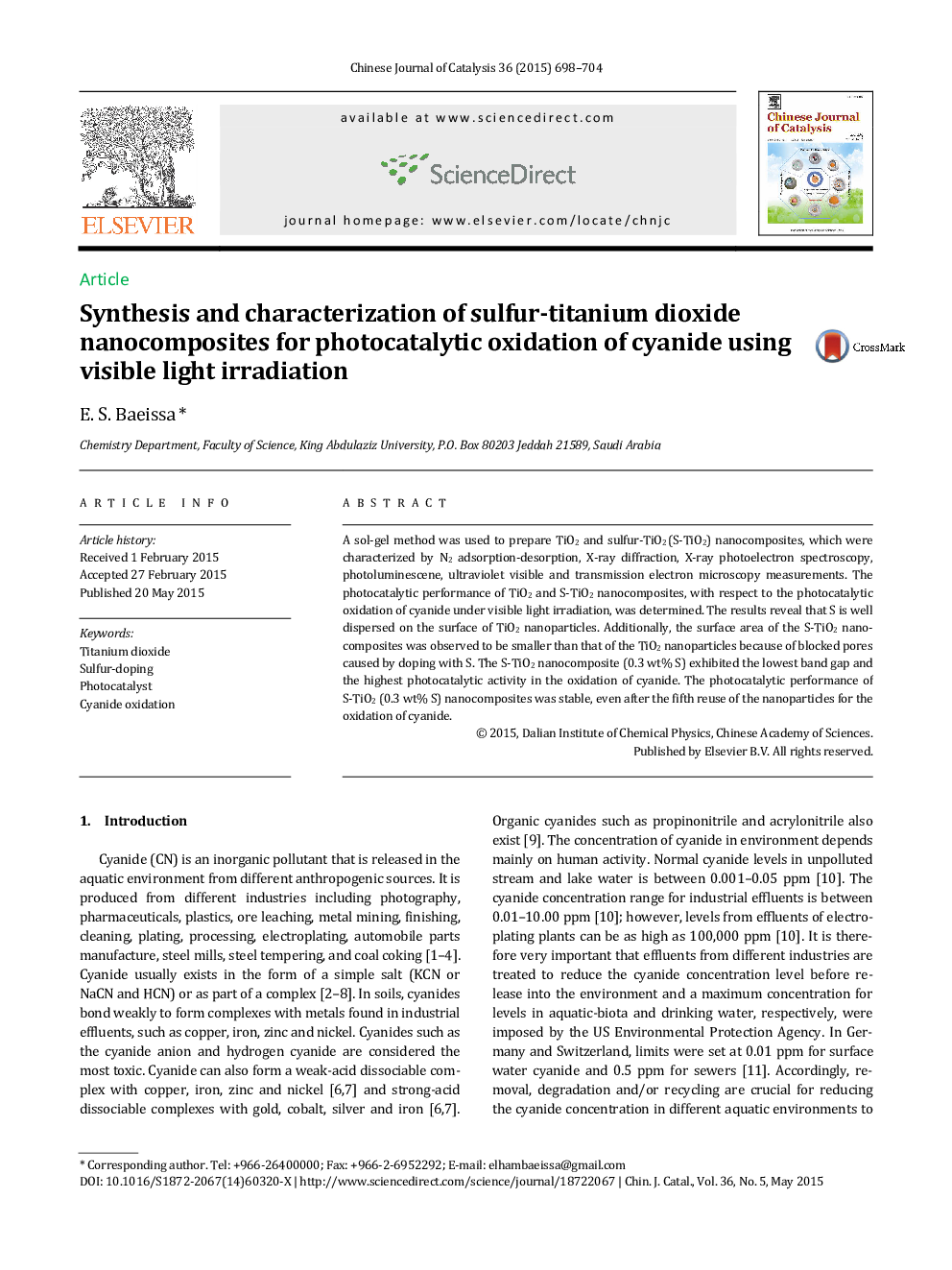| کد مقاله | کد نشریه | سال انتشار | مقاله انگلیسی | نسخه تمام متن |
|---|---|---|---|---|
| 59876 | 1419431 | 2015 | 7 صفحه PDF | دانلود رایگان |
A sol-gel method was used to prepare TiO2 and sulfur-TiO2 (S-TiO2) nanocomposites, which were characterized by N2 adsorption-desorption, X-ray diffraction, X-ray photoelectron spectroscopy, photoluminescene, ultraviolet visible and transmission electron microscopy measurements. The photocatalytic performance of TiO2 and S-TiO2 nanocomposites, with respect to the photocatalytic oxidation of cyanide under visible light irradiation, was determined. The results reveal that S is well dispersed on the surface of TiO2 nanoparticles. Additionally, the surface area of the S-TiO2 nanocomposites was observed to be smaller than that of the TiO2 nanoparticles because of blocked pores caused by doping with S. The S-TiO2 nanocomposite (0.3 wt% S) exhibited the lowest band gap and the highest photocatalytic activity in the oxidation of cyanide. The photocatalytic performance of S-TiO2 (0.3 wt% S) nanocomposites was stable, even after the fifth reuse of the nanoparticles for the oxidation of cyanide.
S-TiO2 nanocomposite photocatalyst can degrade waste materials under visible light. S-TiO2 nanocomposite has lower band gap and higher photo catalytic activity than TiO2 nanoparticle. S-TiO2 nanocomposite can be recycled for five times.Figure optionsDownload as PowerPoint slide
Journal: Chinese Journal of Catalysis - Volume 36, Issue 5, May 2015, Pages 698–704
